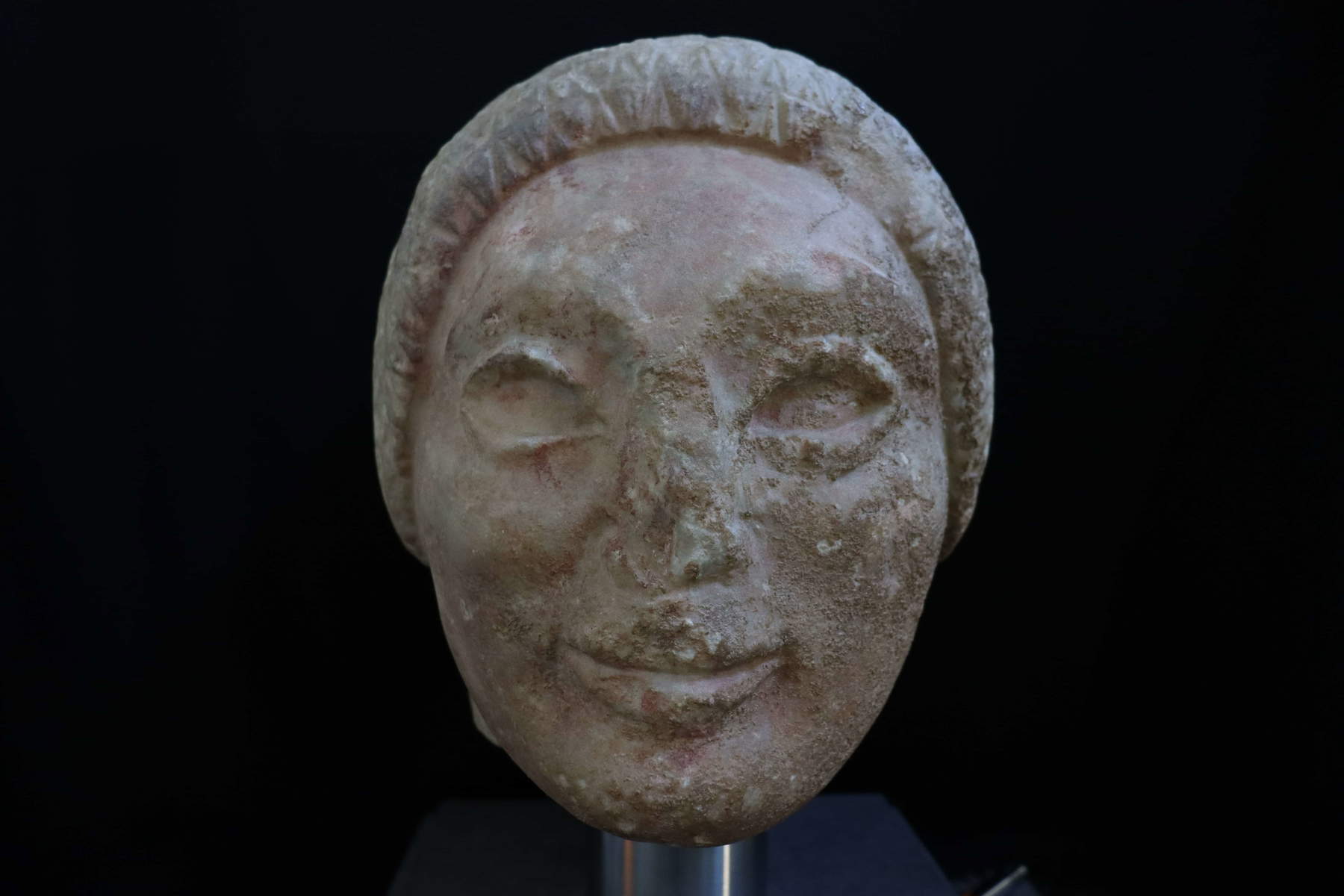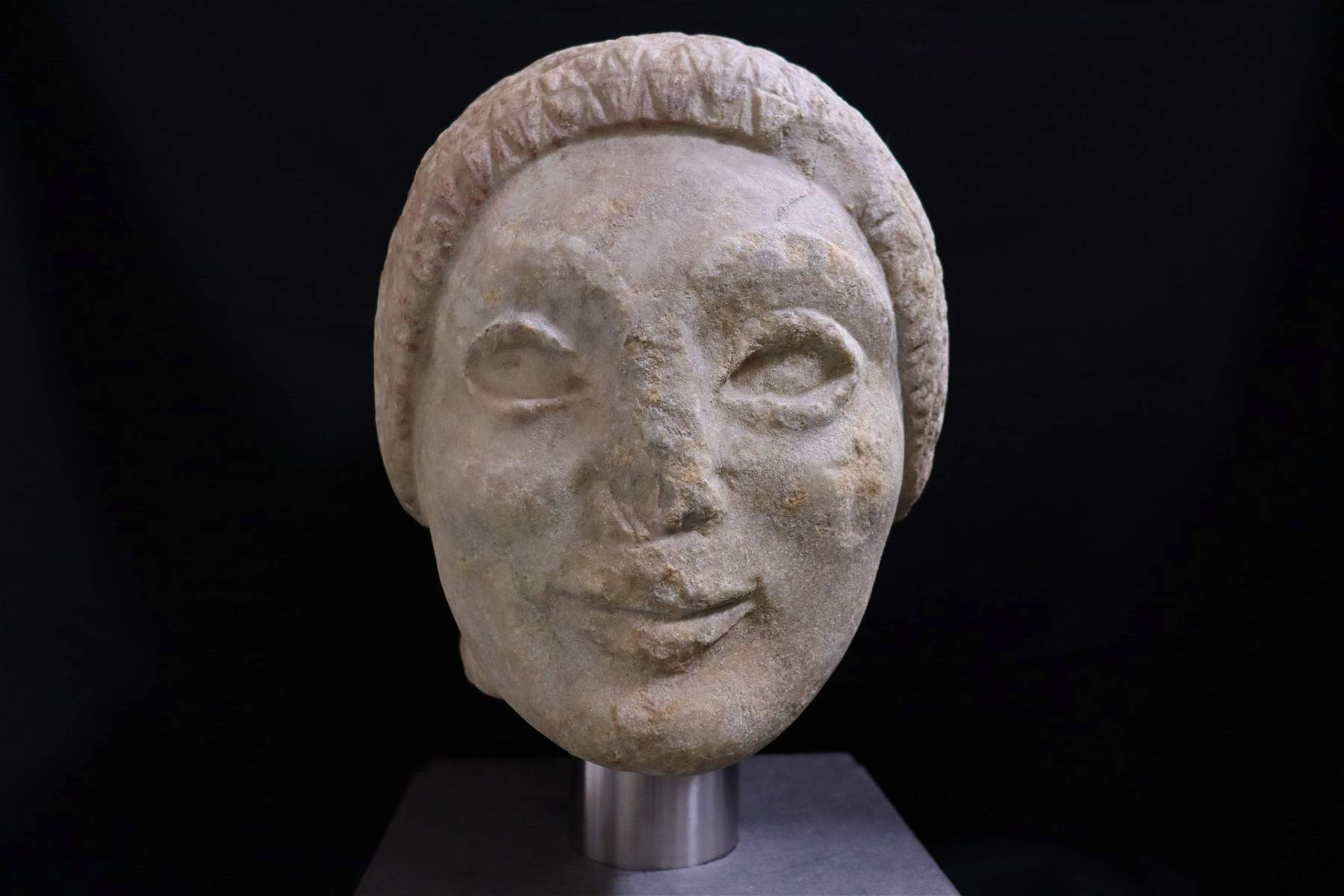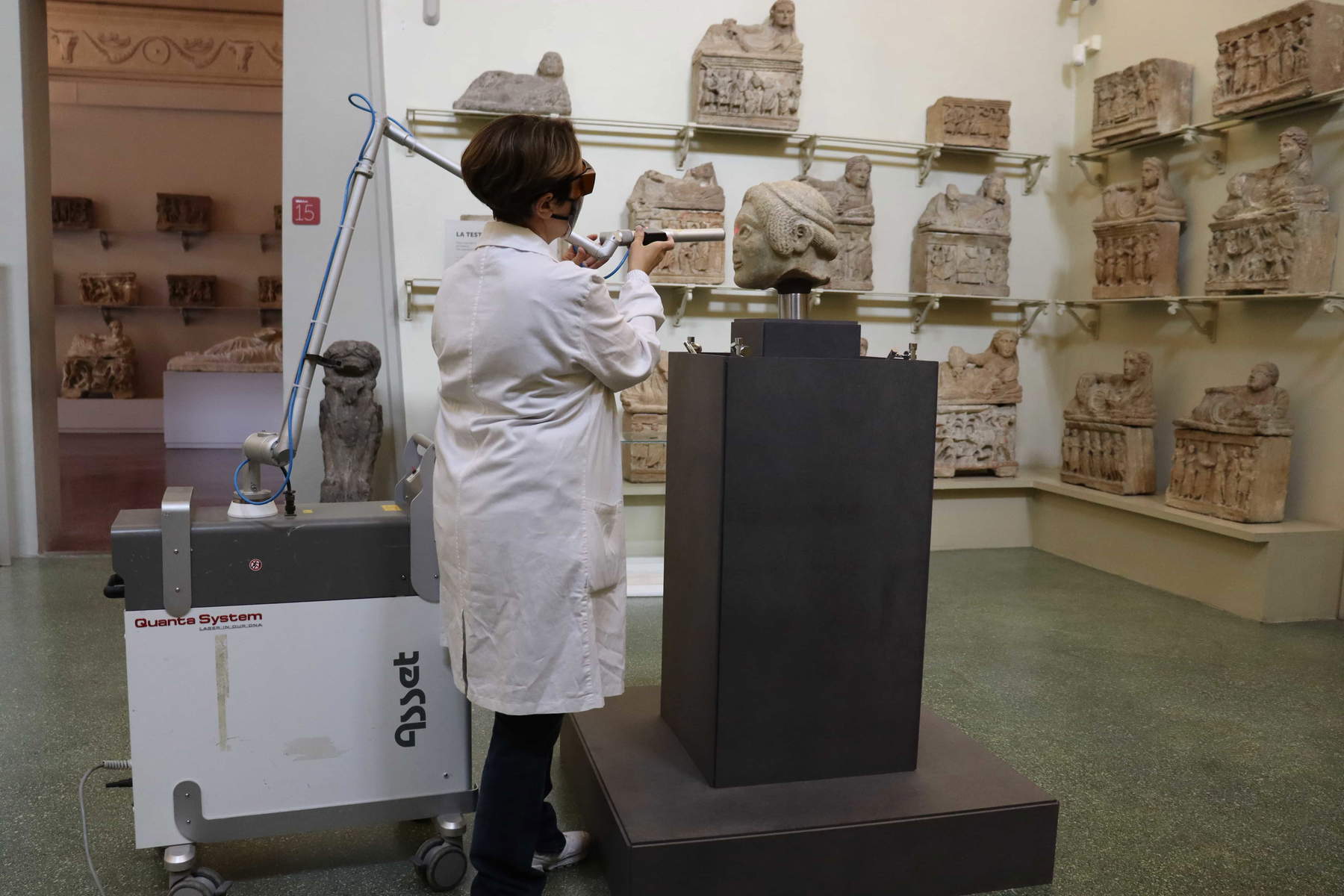At the National Archaeological Museum in Florence, restoration work on Testa Lorenzini, one of the masterpieces of Etruscan marble sculpture, has been completed: it is a work strongly influenced byGreek art, and was probably part of a large cult statue of the god Aplu (the Apollo of the Greeks) that stood in a temple in ancient Volterra. It is one of the most important extant Etruscan sculptures and was purchased by the Ministry of Culture in 2019 specifically for the National Archaeological Museum in Florence.
The sculpture recently underwent a thorough cleaning by restorer Daniela Manna, who made her experience and professionalism available to the museum free of charge. The cleaning intervention took the form of an innovative workshop that allowed for the experimentation of new technologies and working methods, thanks to the use of the EOS 1000 LQS laser equipment that adopts the special Long Q-switch pulse duration (100 ns), optimized for the cleaning of cultural heritage, made available by theEL.EN Group, a leading Italian company in the optoelectronic and laser systems sector. Upon completion, the sophisticated equipment was also donated by EL.EN Group to the Archaeological Museum of Florence.
 |
| The Lorenzini Head before restoration |
 |
| The Lorenzini Head after restoration |
 |
| The cleaning activities on the work |
Thanks to the work’s cleaning and restoration, preceded by a series of diagnostic analyses carried out by specialists from the Institute of Cultural Heritage Sciences of the CNR in Florence, Daniela Manna was able to free, thanks precisely to the use of the Eos 1000 LQS laser, the surfaces of the face and of the splendid and highly detailed hair from the limestone encrustations that prevented the precise volumetry of the head and the quality of the marble from being appreciated. The red glaze that characterized the face was also removed, as it was actually modern paint, and not an ancient pigment, which had been interpreted as an intentional coloring given for ritual or cultic reasons.
Thus cleansed and free of colors and roughness that did not belong to it, the Lorenzini Head can now be fully appreciated and evaluated for the first time in its full and polished forms, in its intentional asymmetries, surely due to the evaluation of the point of view from which the cult statue was to be observed in the mystical and suggestive atmosphere of the temple that housed it in some sacred area of ancient Velathri (Volterra).
The donation to the Florence Archaeological Museum of Florence of the Eos 1000 laser, whose operation makes it possible to treat and remove limestone and other encrustations without in the least affecting the ancient surfaces (or at least to stop near them, in the case of damaged or degraded ancient surfaces), will also make it possible to operate on other marble, alabaster and stone works in the same museum, such as the numerous Etruscan urns with mythological and funerary depictions carved on the front and lid. By having a laser available, the difficulties of traditional mechanical or chemical solvent cleaning techniques will be minimized, optimizing the results. With such a tool at our disposal, the institute assures, we will also be able to improve the educational offerings aimed at the many young people who are embarking on a professional career in the field of Cultural Heritage and who often apply for internships and apprenticeships at the National Archaeological Museum in Florence.
 |
| Florence, restored Lorenzini's Head, a masterpiece of Etruscan sculpture |
Warning: the translation into English of the original Italian article was created using automatic tools. We undertake to review all articles, but we do not guarantee the total absence of inaccuracies in the translation due to the program. You can find the original by clicking on the ITA button. If you find any mistake,please contact us.